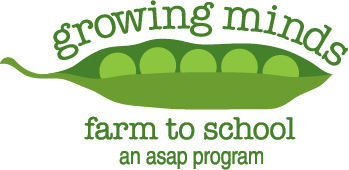This week’s theme is barns. Our “Growing Minds Day by Day” educational resource lists are designed for families and educators.
Growing Minds Day by Day
Barns
Barns are agricultural structures. They may be used to house farm animals, store tools and equipment, dry harvested crops, or store grain or hay for livestock. In the past barns were sometimes used for social events, such as community barn dances. Specific architectural styles of barns are often associated with a particular region. The design of a barn is also impacted by what its primary use will be, what building materials are available, and the weather and climate of the region. The design of a barn in New England may be quite different from a barn found on the prairie or in the mountains. Common types of barns built historically in the US included bank barns, crib barns, dutch barns, round barns, and prairie barns. In WNC and Southern Appalachia, the tobacco barn was a common style, and many of these structures can still be seen today in fields and along roadsides. Visit the National Park Service website to learn more about historic barn types, and how these barns are maintained and preserved.
Books:
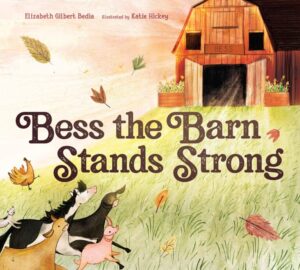
Bess the Barn Stands Strong
By Elizabeth Gilbert Bedia
Beam by beam and board by board, Bess the barn is built by able hands to keep the farm’s animals safe and sound. Through many seasons and celebrations, that’s just what she does, until she starts to sag…and creak…and slump. Then new everything comes along: a new farmer and a shiny new barn. A storm arrives not far behind, putting both barns to a dangerous test―can old Bess weather this threat to the farm? Watch a read aloud by the author.
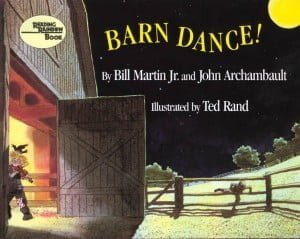
Barn Dance
by Bill Martin Jr. and John Archambault
A young boy hears a barn dance in the middle of the night. He goes to investigate and discovers a room full of dancing farm animals. Recommended for preschool and Kindergarten students. Watch a “Symphony Storytime” read aloud featuring a cellist from the Oregon Symphony.
Find more books
Visit the Growing Minds’ farm to school literature database to discover more of our favorite children’s books.
Local Food Recipe:
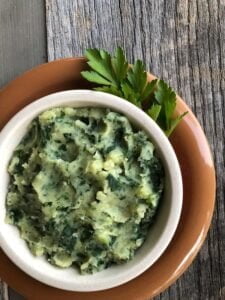
March 17th is St. Patrick’s Day! Celebrate the holiday by making our recipe for mashed potatoes with spinach. This recipe is reminiscent of colcannon, a traditional Irish dish that consists of creamy mashed potatoes mixed with spring onions and greens, such as cabbage or kale.
This simple recipe has many steps that kids can help with. Let them wash the potatoes, tear the spinach, use a kid-safe knife to chop the herbs and garlic, grate the cheese, mash the potatoes, and mix everything together. Use our Kids Cooking Bingo card to track their accomplishments in the kitchen. Ver esta receta en español.
Mashed Potatoes with Spinach
Ingredients:
- 4 medium to large local potatoes
- 8 ounces local spinach (or substitute another leafy green, such as cabbage, kale, or chard)
- 3 tablespoons butter*
- 2 tablespoons fresh herbs (such as chives, rosemary, parsley, or dill)
- 1 clove garlic (optional)
- Salt and pepper to taste
- ½ cup cheddar cheese, grated
- ¼ cup milk
Directions:
- Cut the potatoes into small chunks and boil them until they are soft.
- Chop the herbs and garlic.
- Cut or tear the spinach into small pieces.
- Combine the potatoes, herbs, spinach, garlic, milk, and butter in a large pot and heat on medium for one to two minutes.
- Mash the potatoes until they are smooth.
- Add the cheese and stir.
- Add the salt and pepper to taste.
*As an optional activity, students or kids can make their own butter for this recipe by shaking heavy cream in a jar.
Educational Resources:
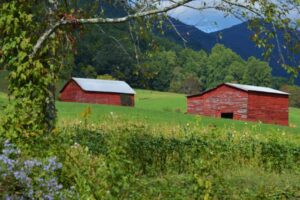
History of WNC Tobacco Barns
- Appalachian Barn Alliance. This organization’s mission is to preserve the rural heritage of Madison County and surrounding areas through the documentation of the historical barn building traditions and the barns they represent for future generations. Explore their database of Southern Appalachian barns, and learn how to take a self-guided tour of historic barns in Madison County.
- Growing Local: The Legacy of Tobacco in WNC. Listen to learn about the history of tobacco farming in Western North Carolina. Growing tobacco was often a community effort. Heat about how wooden barns were used to dry tobacco leaves, and how farms in our region have transitioned to new crops.
- Growing Local: The Tobacco Barns of Madison County. Join the Appalachian Barn Alliance to tour a couple of historic tobacco barns in Madison County. Hear about the history of these structures and how they were built, then hear how today’s farmers are repurposing the barns for new uses, like drying garlic.
- Tobacco: Field, Barn, and Market. “During most of the twentieth century, tobacco was one of the major drivers of North Carolina’s economy. The mountain counties in the western part of the state were no exception. Most farmers raised at least some tobacco. The tobacco barns that still stand throughout the region testify to the former importance and popularity of the crop.” Explore historical photos and newspaper clippings from the Southern Appalachian Archives at Mars Hill University.
Swing Your Partner: The Basics of Square Dancing
Source: The Kennedy Center
In this 3-5 lesson, students will be introduced to the history of square dancing and create a “Kids’ Guide to Square Dancing” media resource. They will learn some basic steps and formations to perform and teach to other children. View the lesson plan here.
Activities:
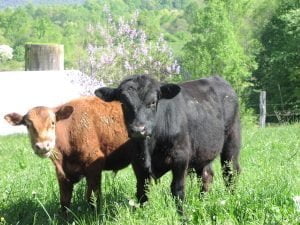
Farm Animal Energizer!
Have children play pretend farm animals. Explain to children that when you shout out an animal, the child has to walk like that animal would walk. Choose from cows, pigs, turkeys, chickens, sheep, horses, and many more. How do these animals eat, run, and sleep? Have the children attempt to mimic all of these movements in a large open area.
Design your own barn
What would it look like? What would it be made of? What shape would it be? What would you use your barn for? Would you keep animals inside the barn? What would you store inside your barn? Would you host barn dances? If so, what style of dancing would happen at your barn dance? Would you give your barn a name? Draw a picture of your barn, write about it, or tell someone a story about it.
WNC Barn Quilt Trails:
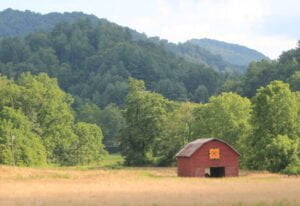
Have you ever noticed colorful geometric squares affixed to barns and other buildings when driving through rural areas? While traditional quilts are made of fabric, these squares are made of painted wood. Since they’re often hung on barns, they’re called barn quilts. Did you know that Western North Carolina has the highest concentration of barn quilt blocks anywhere in the USA? Nine contiguous counties host quilt blocks, with the highest concentration in Yancey, Mitchell, and Haywood Counties. The quilt blocks in our region tell a story by portraying a connection to the community or culture of the place where they hang. Visit quilttrailswnc.org to learn more about this community art project and find interactive quilt trail maps.
Design Your Own Quilt Square
After learning about barn quilt trails, students and families can use our quilt square worksheet to design their own barn quilt.
—
That’s it for this week. Check back next week for new resources. Click here to access Day by Day resources from past weeks. If you didn’t find what you’re looking for here, please visit our Lesson Plans page.
